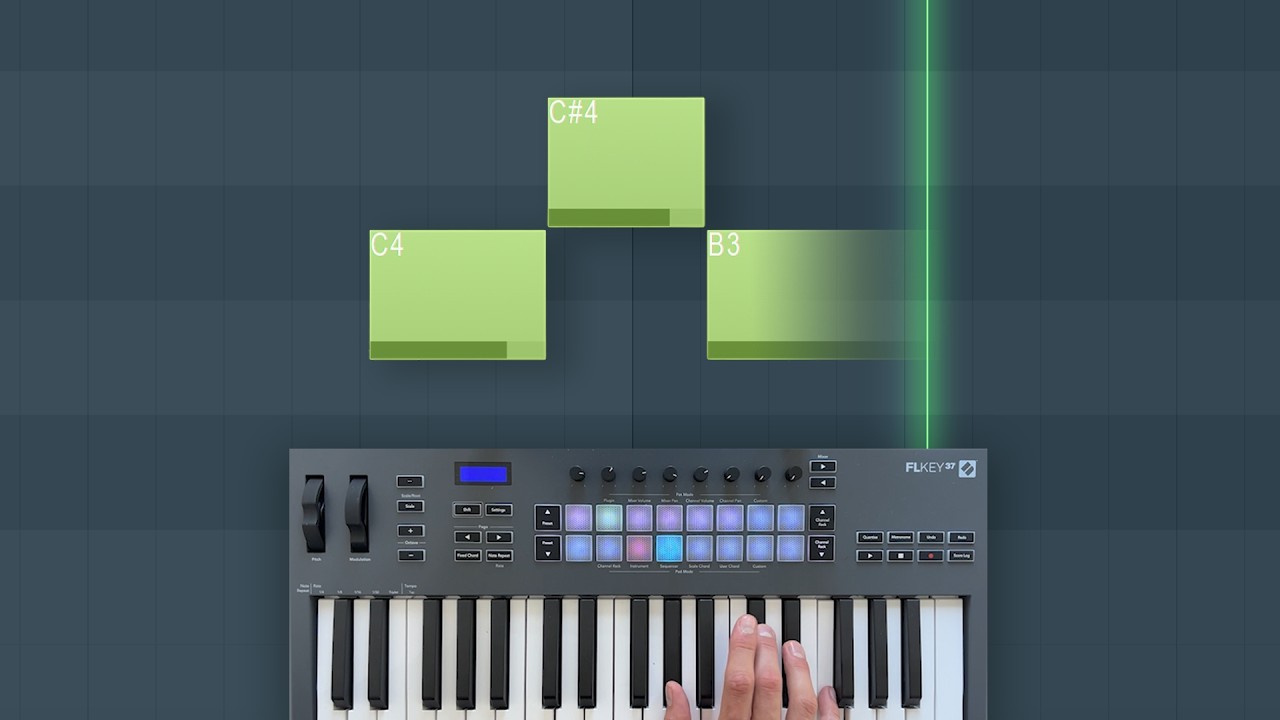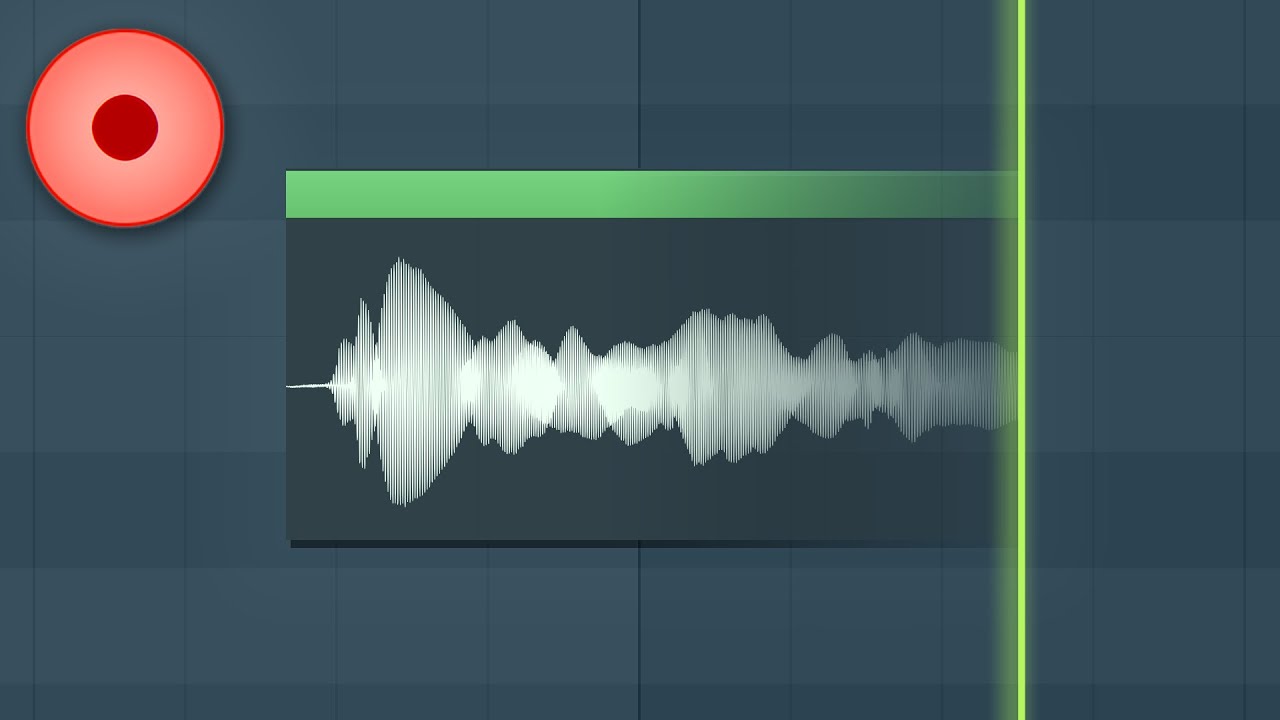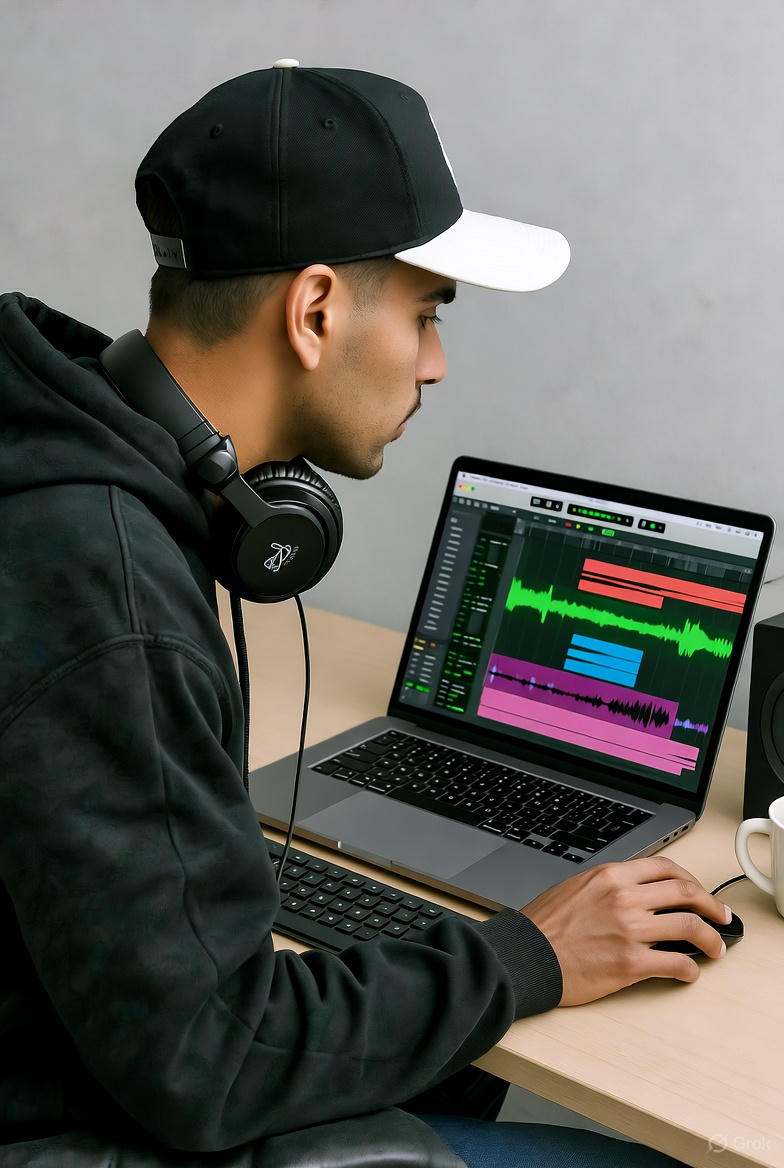!Let Us HELP YOU!
We have a lot of curated content on this blog.
Take this simple 20 second Quiz to Help You
Find The Exact Content You Are Looking For!
Beat mixing might sound like just another step in music production, yet it shapes how every song grabs your ear. One small tweak can turn a rough demo into a track that feels ready for radio. And here is the kicker. Research shows that high-quality mixing directly boosts emotional response in listeners, making your music not just heard but truly felt. Most people credit lyrics and melodies for a song’s magic, but the real power often lies in how those sounds blend together.
Table of Contents
- What Is Beat Mixing And Its Importance?
- Key Elements Of The Beat Mixing Process
- How Beat Mixing Affects Music Production
- Common Techniques Used In Beat Mixing
- Real-World Examples Of Effective Beat Mixing
Quick Summary
| Takeaway | Explanation |
| Beat mixing enhances audio clarity. | Proper management of frequencies and levels ensures each sound is distinct and clear in the overall mix. |
| Sound selection is crucial for cohesion. | Choosing complementary audio elements facilitates a harmonious and engaging listening experience. |
| Effective mixing creates emotional connection. | Strategic placement of sounds inspires emotional responses, enhancing listener engagement with the music. |
| Dynamic processing improves overall sound quality. | Techniques like compression help balance track energy, making the mix sound more polished and professional. |
| Layering adds depth to the composition. | Thoughtful layering of sounds enriches the musical texture, creating more intricate and immersive sonic experiences. |
What is Beat Mixing and Its Importance?
Beat mixing represents the foundational process where music producers blend multiple audio tracks to create a cohesive and harmonious sound. At its core, this technical craft transforms individual musical elements into a polished, professional composition. Our guide on understanding beat production can provide deeper insights into this intricate process.
The Fundamental Concept of Beat Mixing
Beat mixing goes beyond simply combining sounds. It involves strategically adjusting volume levels, frequencies, stereo positioning, and dynamic ranges to ensure each musical element complements the others. Producers work meticulously to balance instruments, vocals, and rhythmic components so that no single element overpowers or gets lost in the overall mix.
Key considerations in beat mixing include:
- Creating spatial depth and dimension
- Maintaining clarity across different frequency ranges
- Ensuring smooth transitions between musical sections
According to research from the Center for New Music and Audio Technologies, audio mixing fundamentally involves combining recorded sounds into precise channels, most commonly two-channel stereo, with the ultimate goal of delivering a cohesive listening experience.
Why Beat Mixing Matters for Music Producers
Professional beat mixing distinguishes amateur productions from professional recordings. It transforms raw musical elements into a polished, engaging soundscape that captures listeners’ attention. Good mixing can elevate average musical ideas into compelling auditory experiences, making the difference between a track that sounds amateurish and one that resonates with audiences.
The importance of beat mixing extends beyond technical precision. It represents an art form where producers communicate emotional nuances, create sonic landscapes, and guide listeners through a musical journey. A well-mixed track can evoke specific feelings, highlight musical narratives, and create memorable sonic experiences that connect deeply with listeners.
Key Elements of the Beat Mixing Process
Beat mixing requires a sophisticated approach that combines technical skill and artistic sensibility. Producers must master several critical elements to transform raw audio tracks into polished musical compositions. Learn more about advanced beat production techniques to enhance your understanding of this intricate process.
Sound Selection and Layering
The foundation of effective beat mixing starts with strategic sound selection. Producers carefully choose audio elements that complement each other, creating a harmonious sonic landscape. Sound layering involves thoughtfully stacking different audio tracks to build depth, texture, and complexity in the musical arrangement.
Key considerations for sound selection include:
- Matching frequency ranges
- Ensuring tonal compatibility
- Maintaining musical cohesion
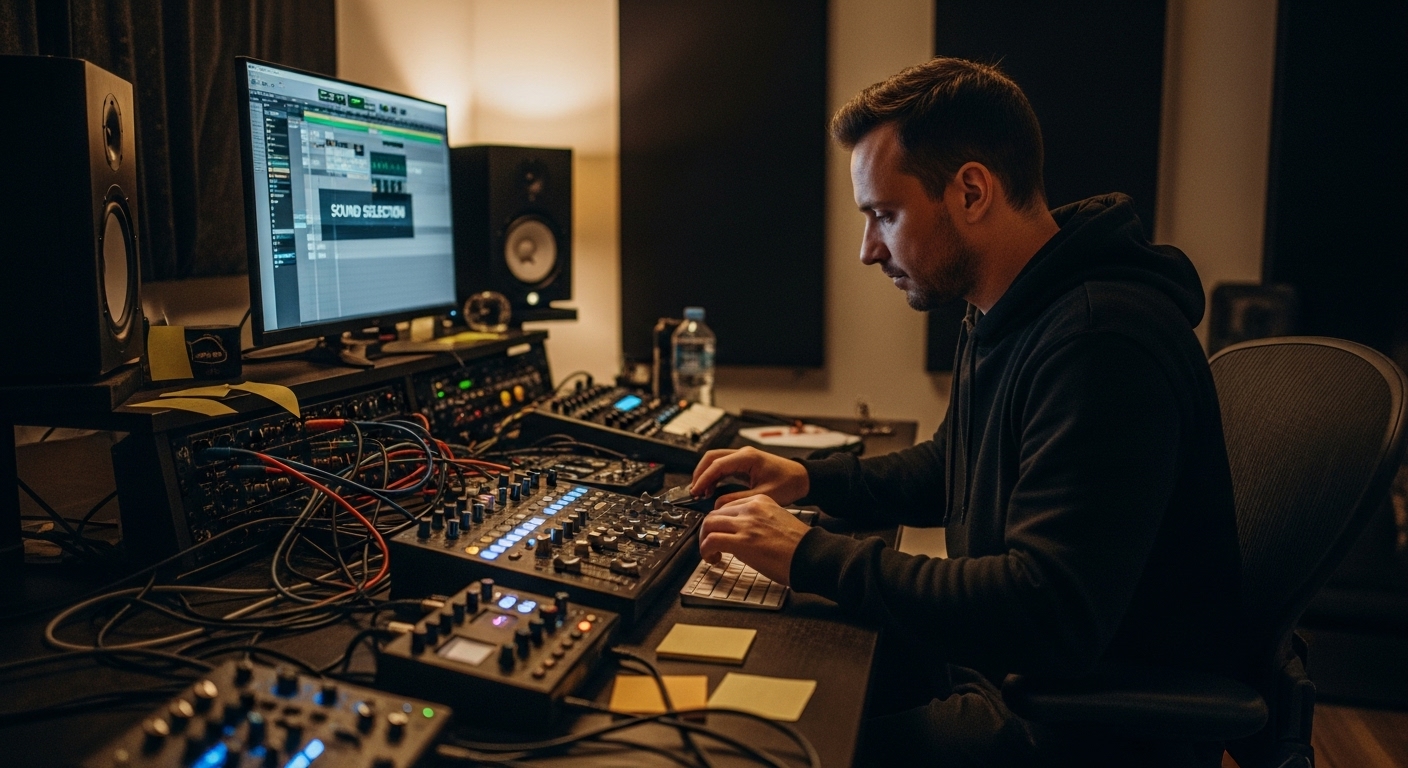
- Avoiding frequency masking
According to Visible Music College research, successful layering requires understanding how different sounds interact and support each other within the mix.
Technical Balancing and Frequency Management
Professional beat mixing demands precise technical skills.
Producers must balance volume levels, adjust equalization, and manage frequency ranges to ensure each musical element sits perfectly within the overall composition.
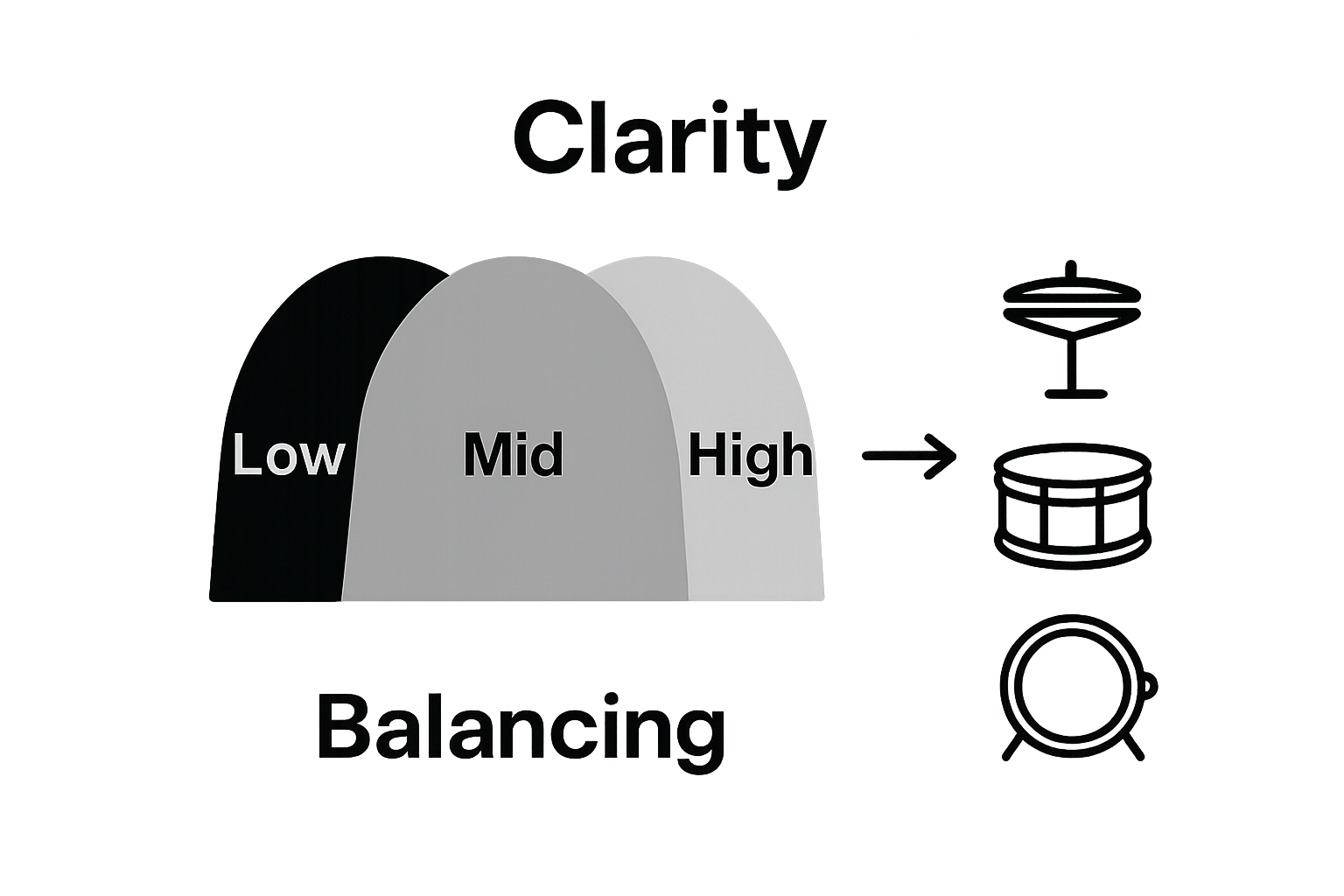 This process involves careful gain staging, where each track is adjusted to prevent distortion while maintaining optimal sound quality.
This process involves careful gain staging, where each track is adjusted to prevent distortion while maintaining optimal sound quality.
WEBSITE RESOURCES FOR MUSICIANS
Critical technical aspects include:
- Managing dynamic range
- Controlling stereo positioning
- Applying subtle compression
- Creating spatial depth
The art of beat mixing transcends mere technical proficiency. It requires an intuitive understanding of how different sounds interact, complementing each other to create a cohesive and engaging musical experience that captures listeners’ emotional landscape.
How Beat Mixing Affects Music Production
Beat mixing represents a transformative process that fundamentally reshapes how musical compositions are crafted and perceived. This intricate technique does far more than simply combining sounds. Explore advanced music production strategies to understand the nuanced impact of beat mixing on musical creativity.
Emotional Resonance and Listener Experience
Beat mixing plays a critical role in creating emotional depth within musical productions. By carefully manipulating sound elements, producers can guide listeners through complex emotional landscapes. Sonic storytelling emerges through strategic placement of audio elements, allowing tracks to communicate feelings and narratives beyond mere instrumental arrangements.
Key emotional impact factors include:
- Creating tension and release
- Highlighting musical transitions
- Emphasizing rhythmic and melodic nuances
- Generating sensory anticipation
According to groundbreaking research on music production, high-quality mixing directly correlates with enhanced emotional responses from listeners, demonstrating the profound psychological influence of expert beat mixing.
Creative and Technical Transformation
Beat mixing transcends technical execution, representing a powerful creative tool that allows producers to reimagine musical potential. Producers utilize mixing techniques to experiment with sound textures, spatial dimensions, and sonic architectures. Sound design becomes an art form where individual tracks are transformed into cohesive, immersive musical experiences.
Critical creative considerations include:
- Expanding sonic possibilities
- Challenging traditional musical boundaries
- Developing unique production signatures
- Integrating unexpected sound elements
The ultimate impact of beat mixing extends beyond immediate musical production. It represents a dynamic intersection of technology, artistic vision, and emotional communication, enabling producers to craft unprecedented auditory experiences that resonate deeply with audiences.
The following table outlines essential elements of the beat mixing process, summarizing each stage and its contribution to a professional-sounding track.
| Element | Description | Contribution to Final Mix |
| Sound Selection | Choosing complementary audio elements | Ensures musical cohesion and harmony |
| Layering | Stacking sounds for depth and texture | Adds richness and complexity |
| Frequency Management | Adjusting EQ to prevent frequency overlap | Maintains clarity and separation |
| Dynamic Processing | Using compression and limiting for volume control | Balances energy and creates a polished sound |
| Stereo Placement | Positioning sounds across the stereo field | Enhances spatial imaging and immersion |
| Gain Staging | Setting optimal volume levels for each track | Prevents distortion and optimizes headroom |
Common Techniques Used in Beat Mixing
Beat mixing involves a sophisticated array of technical approaches that transform raw audio into polished musical experiences. Producers employ multiple strategic techniques to craft compelling soundscapes that captivate listeners. Explore advanced mixing strategies to deepen your understanding of these intricate processes.
Equalization and Frequency Management
Equalization (EQ) represents a fundamental technique where producers carefully adjust specific frequency ranges to enhance clarity and balance. By sculpting sound frequencies, producers can create space for each musical element, preventing sonic clutter and ensuring each instrument maintains its distinct character.
Key EQ considerations include:
- Removing problematic frequency ranges
- Creating spectral separation between instruments
- Enhancing harmonic richness
- Balancing overall tonal qualities
According to Berklee College of Music’s professional mixing techniques, precise frequency management is crucial for creating professional-grade audio productions.
Dynamic Processing and Signal Control
Dynamic processing techniques allow producers to control the volume and energy of individual tracks and overall mixes. Compression emerges as a critical tool, helping to even out volume inconsistencies and create a more cohesive sound. Producers use sidechain compression, limiting, and other advanced techniques to shape sonic dynamics.
Critical dynamic processing strategies include:
- Controlling transient responses
- Managing volume fluctuations
- Creating rhythmic pumping effects
- Enhancing perceived loudness
These techniques represent more than technical adjustments. They are creative tools that allow producers to sculpt sound, communicate emotion, and transform raw audio into immersive musical experiences that resonate deeply with listeners.
The table below compares key beat mixing techniques, offering a concise overview of their main purposes and effects in the music production process.
| Technique | Main Purpose | Effect on Mix |
| Equalization (EQ) | Adjusts and balances frequency ranges | Enhances clarity and separation between sounds |
| Compression | Controls dynamic range | Smooths out volume, adds cohesion |
| Layering | Stacks multiple sound elements | Adds depth and complexity to the track |
| Stereo Positioning | Places sounds in left/right field | Creates spatial depth and interest |
| Gain Staging | Manages input/output volume levels | Prevents distortion, maintains sound quality |
| Sidechain Compression | Prioritizes specific sounds | Creates rhythmic effects, prevents masking |
Real-World Examples of Effective Beat Mixing
Real-world beat mixing demonstrates the profound artistry and technical sophistication that transform ordinary musical recordings into extraordinary sonic experiences. Professional producers leverage advanced techniques to create memorable, emotionally resonant tracks across various genres. Discover advanced mixing techniques to understand the nuanced craft of beat mixing.
Hip-Hop and Electronic Music Production
Hip-hop production represents a pioneering domain where beat mixing techniques revolutionized musical creativity. Legendary producers like DJ Premier and J Dilla transformed sampling and mixing into an art form, creating complex sonic landscapes by meticulously layering and manipulating audio fragments. Their innovative approaches demonstrated how precise beat mixing could elevate simple samples into compelling musical narratives.
Key innovative mixing strategies in hip-hop include:
- Chopping and rearranging samples
- Creating rhythmic complexity
- Emphasizing unexpected sonic textures
- Generating unique harmonic interactions
According to research analyzing DJ mixing techniques, these methods represent sophisticated approaches to musical composition and sound design.
Genre-Spanning Mixing Techniques
Effective beat mixing transcends genre boundaries, requiring producers to understand each musical style’s unique sonic characteristics. Electronic music producers like Bonobo and Four Tet demonstrate exceptional skill in blending organic and synthetic sounds, creating immersive soundscapes that challenge traditional musical boundaries.
Critical cross-genre mixing considerations include:
- Maintaining sonic clarity
- Preserving emotional authenticity
- Balancing technological precision
- Respecting musical tradition
These examples illustrate how beat mixing is more than technical manipulation. It represents a creative dialogue between technology, artistic vision, and emotional expression, enabling producers to craft musical experiences that resonate deeply with listeners across diverse musical landscapes.
Ready to Transform Your Beat Mixing Skills?
Are you struggling to make your mixes sound as polished and professional as you hear in your favorite tracks? You learned how each detail in the beat mixing process—like sound selection, frequency management, and layering—can make or break your music. But even with all this knowledge, it can feel overwhelming to put everything together and get that clean, impactful sound that stands out in any genre.
Why not take the next step with expert resources designed just for beat makers and producers like you? On How To Make Beats Blog, you’ll find practical tutorials for all major DAWs, step-by-step guides to mixing and mastering, and real reviews of the gear and tools that define today’s music production. Dive into actionable articles like why master your beats or browse hands-on tips tailored to every style from hip-hop to EDM. Visit How To Make Beats Blog now and start building the kind of mixes that get noticed. Your next level starts here—don’t wait to let your tracks shine.
Frequently Asked Questions
What is beat mixing in music production?
Beat mixing is the process of blending multiple audio tracks to create a cohesive and harmonious sound. It involves adjusting volume levels, frequencies, stereo positioning, and dynamic ranges to ensure that each musical element complements the others.
Why is beat mixing important for music producers?
Beat mixing is crucial because it transforms raw musical elements into professional recordings. Good mixing enhances the listening experience, capturing the audience’s attention and establishing emotional connections through polished soundscapes.
What are some key elements of the beat mixing process?
Key elements of beat mixing include sound selection and layering, technical balancing, frequency management, dynamic processing, and maintaining emotional resonance. These components contribute to creating a balanced and engaging final production.
How does beat mixing affect the emotional impact of a track?
Beat mixing affects emotional impact by carefully manipulating sound elements to create tension, highlight transitions, and emphasize nuances. A well-mixed track can evoke specific feelings and guide listeners through a musical narrative, enhancing their overall experience.
Recommended
- Why Master Your Beats: Understanding the Art of Sound – How To Make Beats Blog
- Mixing and Mastering – How To Make Beats Blog
- Splice.com Sample Library Reviewed – How To Make Beats Blog
- Selling Beats Video 5 – How To Make Beats Blog

